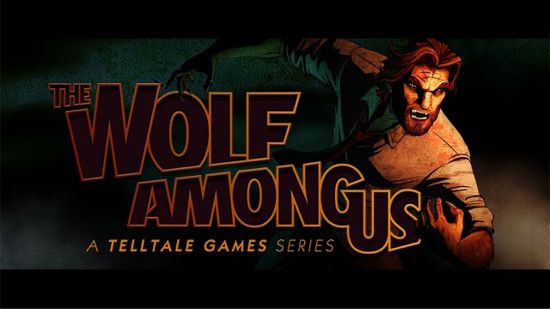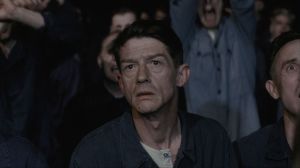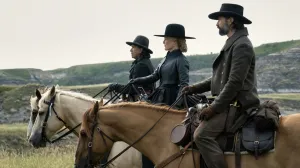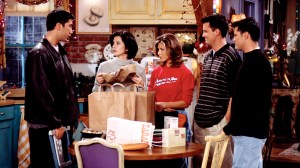Videos by ComicBook.com
has a lot to live up to. On one hand, it’s a prequel to Bill Willingham’s popular and successful Vertigo comics series, Fables. On the other hand, its the first new project from Telltale games since they successfully adapted another popular and successful comic book series, The Walking Dead, into a critically acclaimed episodic game series of its own. It’s a good thing then that the first episode of The Wolf Among Us, “Faith,” is a finely crafted and engaging story that fans of either Fables or Telltale’s previous works will appreciate.For those unfamiliar, Fables tells the story of a community of characters found in fairy tales who have been driven from their homes and forced to take up residence in a magically guarded neighborhood in New York City called Fabletown. Most of these characters were forced to flee their homes in a hurry, and so lost most of their belongings, wealth and means of making a living. While a few have managed to maintain or return to a comfortable lifestyle, many are struggling just to get by in their new home.In The Wolf Among Us, players assume the role of Bigby Wolf, the Big Bad Wolf of fairytale lore and a central character in Fables. Bigby sees the Exodus to Fabletown as a chance for a fresh start and has reformed himself. Now, he’s the sheriff of Fabletown, charged with keeping his fellow fables from killing each other or exposing themselves to the mundies (slang the fables use for the mundane, normal residents of our world).The episode has a sharply written opening chapter in which Bigby responds to a call from Toad (of The Wind in the Willows), now a tenement lord in Fabletown, who needs help dealing with The Woodsman (the hero who saved Red Riding Hood from Bigby himself), who is drunkenly rampaging around his apartment. A woman’s voice lets them know that somebody else is in the room with the Woodsman, and so Bigby quickly springs into action.What follows is the Red Riding Hood story turned upside down, with the Woodsman terrorizing a girl and the Big Bad Wolf arriving just in time to rescue her. Its a brilliant way to start the series off and introduce players unfamiliar with the world of Fables to the game, showing them an example of how far these characters have fallen and how much things have turned around since their fairytale days. In the same chapter, we see Toad ushering his son back into their apartment and warning him that, if he doesn’t stay hidden, then the “Bag Bad Wolf” will take him away. It introduces players early on to the struggle that Bigby faces, trying to walk a new path while so many others will always see him as the cautionary tale he was original molded as.The story is given great atmosphere thanks to some fine art direction, environment design and musical scoring. Fabletown, at night, is full of lush purples contrasted against the blue-black night that bring out the feel of a seedy, neon-lit New York City in the ’80’s, all while a moody, dark and synth-infused musical track plays in the background. All of this combines to create a modern, urban noir atmosphere completely at odds with what you’d expect from a story about fairytale characters. Similarly, little environmental touches, such the classic car memorabilia from days past that decorates the walls of Toad’s rundown apartment, help hint at the duality of the fables’ lives in New York City.This duality plays a big role at the emotional core of the story. For much of the episode, Bigby is accompanied by Snow White. Snow White is now the assistant to Deputy Mayor of Fabletown, Ichabod Crane. Her job make her one of the key cogs in the machine of Fabletown government, a government that she realizes, increasingly, favors backdoor politics with wealthy characters but leaves the legitimate petitions of Fabletown’s less privileged residents unheard. This theme is present throughout the episode and gives the story a sense of social relevance and pathos that, even though it doesn’t yet reach the tear-jerking heights found in The Walking Dead game, is enough to genuinely invest players in the characters.The actual gameplay that accompanies the story is sparse. Bigby explores environments, converses with other characters, and investigates anything that seems useful or out of place much the same way that Lee did The Walking Dead. Conversations involve multiple timed dialog choices that can effect the story and the way other characters perceive you. Usually, the other characters continue speaking while you decide on your own dialog and this can sometime create a clumsy sequence where Bigby sounds like he’s interrupting someone with an almost random comment. On the whole, though, the dialog is well written and well acted, with each character having a nicely defined voice and personality.As the sheriff, Bigby is expected to do a bit of crime scene investigation, but this amounts to little more than clicking on every selectable object on the screen until you see everything there is to see. There is one sequence when your investigation can lead you to catch another character in a lie, but a player would almost have to deliberately avoid the clues in order to not accomplish this.A new feature of the system is decision points where you’ll have to decide which course of action to take first. Do you respond to this call first, or put it off until after the other one? Which suspect do you chase down? Theoretically, these decisions have ramification on how the story plays out, but its hard to tell exactly how much they influence things based on a single playthrough of just the game’s first episode.The game’s action sequences use quick time events that require you to hit certain buttons or click certain places on the screen before you run out of time in order to dodge, punch or jump. Its not the deepest system, but it succeeds in getting the adrenaline running and a small, intimate game like The Wolf Among Us hardly requires much more.Really, it’s the story and setting that sells The Wolf Among Us. The gameplay is a necessary tool to convey the story and the interactive nature of the video game, even if it is just moving a character around the screen, helps invest players in Bigby and the world he lives in through play and exploration. Some will say The Wolf Among Us didn’t need to be a game at all, and they might be right, but that doesn’t mean that its not better off for choosing to be one. With a brilliant opening, a smart story, and an ending that longtime Fables fans will definitely not see coming, the first episode of The Wolf Among Us delivers for Fables fans and neophytes alike.









